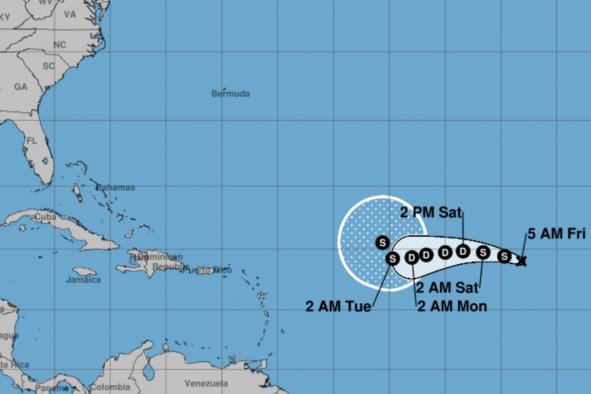Unprecedented levels of the bird flu virus have been detected in wastewater samples from across Texas, raising alarms that the disease is adapting to infect a new host.
Before March 2024, wastewater samples from across the state had tested negative for the virus. However, between March and July, 10 out of the 10 cities tested—at 22 of 23 wastewater test sites—tested positive for the virus.
"These results need to be taken very seriously, especially given the lessons of the COVID-19 pandemic we all just went through," Anthony W. Maresso, the Joseph L. Melnick Chair of Virology at Baylor College of Medicine, told Newsweek.
"We don't want to create unnecessary concern, but it would be a mistake to dismiss the fact that avian flu is now in mammals at a level that we have not before observed. This means the virus is learning to adapt to this new host and that can mean a greater chance of it adapting to humans to transmit better and possibly cause disease or another flu pandemic.
Highly pathogenic avian influenza (HPAI) is an infectious viral illness that spreads primarily among wild and domestic birds. However, the virus that causes bird flu can sometimes jump into animals, including dairy cows and, in some cases, humans.
A "multistate outbreak" of the virus has emerged among dairy cattle since mid-March, according to the U.S. Centers for Disease Control and Prevention (CDC), with 14 states and 196 herds affected. During that same period, 14 human cases have been reported across the country. However, 13 of these were following exposure to poultry or dairy cows.
While symptoms have so far been relatively mild, it is vital that we continue to monitor the situation. For this reason, Maresso and colleagues used state-of-the-art viral DNA detection to monitor wastewater levels of the virus across Texas. Their findings were published in the New England Journal of Medicine.
"Our method is unique in that we use a sequencing-based approach that is very sensitive and thus possibly able to detect lower levels of the virus than traditional techniques," Eric Boerwinkle, another of the study's co-authors, Director of the Texas Epidemic Public Health Institute and Dean of the UTHealth School of Public Health, told Newsweek. "To our knowledge, no other state or program has adopted this agnostic sequence-based approach to wastewater monitoring for viruses of pandemic potential. Texas is clearly ahead in this respect."
So, what do these results mean for us? "The results are concerning but also very helpful," Maresso said. "It is concerning because our detection of this virus in wastewater means that the virus has made its way into mammals at a substantial enough level to detect it from agricultural, dairy or other animal sources. And we cannot rule out bird inputs either."
However, he added that bird flu wastewater detection did not correlate with human infections. "This means we believe the source of the virus is largely animal in origin, but we cannot rule out at this point that it may be in some people at low levels."
Maresso added that the findings supported the use of wastewater monitoring in our surveillance of this virus: "The results are helpful because it indicates wastewater monitoring is now an essential tool in our ability to track this virus, especially if it becomes transmissible between people, which may lead to the next flu pandemic. Thus, wastewater monitoring will become a critical tool in our ability to detect its adaptation to humans and spread in human populations.
"This is in addition to the now many other viruses tracked by wastewater monitoring, especially knowing before they cause outbreaks."
The authors recommend expanding wastewater monitoring beyond the state to enable us to respond to any changes in bird flu levels before they become a problem. "We recommend expansion of testing and, in particular, sequencing of samples from infected animals (dairy and birds) and exposed/suspected exposure agricultural workers," Blake Hanson, Assistant Professor in the Center for Infectious Diseases at UTHealth Houston School of Public Health, told Newsweek.
"We must also be vigilant in not ruling out avian flu in people with flu-like illness as we ramp up for the normal flu season this fall and winter. Testing specifically for avian flu, at least in some suspected cases, along with other surveillance measures like wastewater and agricultural testing is the only way we will shine a light on the activities of this concerning virus."
Is there a health problem that's worrying you? Let us know via health@newsweek.com. We can ask experts for advice, and your story could be featured in Newsweek.
References
Tisza, M. J., Hanson, B. M., Clark, J. R., Wang, L., Payne, K., Ross, M. C., Mena, K. D., Gitter, A., Javornik Cregeen, S. J., Cormier, J., Avadhanula, V., Terwilliger, A., Balliew, J., Wu, F., Rios, J., Deegan, J., Piedra, P. A., Petrosino, J. F., Boerwinkle, E., & Maresso, A. W. (2024). Sequencing-Based Detection of Avian Influenza A(H5N1) Virus in Wastewater in Ten Cities. The New England journal of medicine, 10.1056/NEJMc2405937. Advance online publication. https://doi.org/10.1056/NEJMc2405937
Disclaimer: The copyright of this article belongs to the original author. Reposting this article is solely for the purpose of information dissemination and does not constitute any investment advice. If there is any infringement, please contact us immediately. We will make corrections or deletions as necessary. Thank you.



